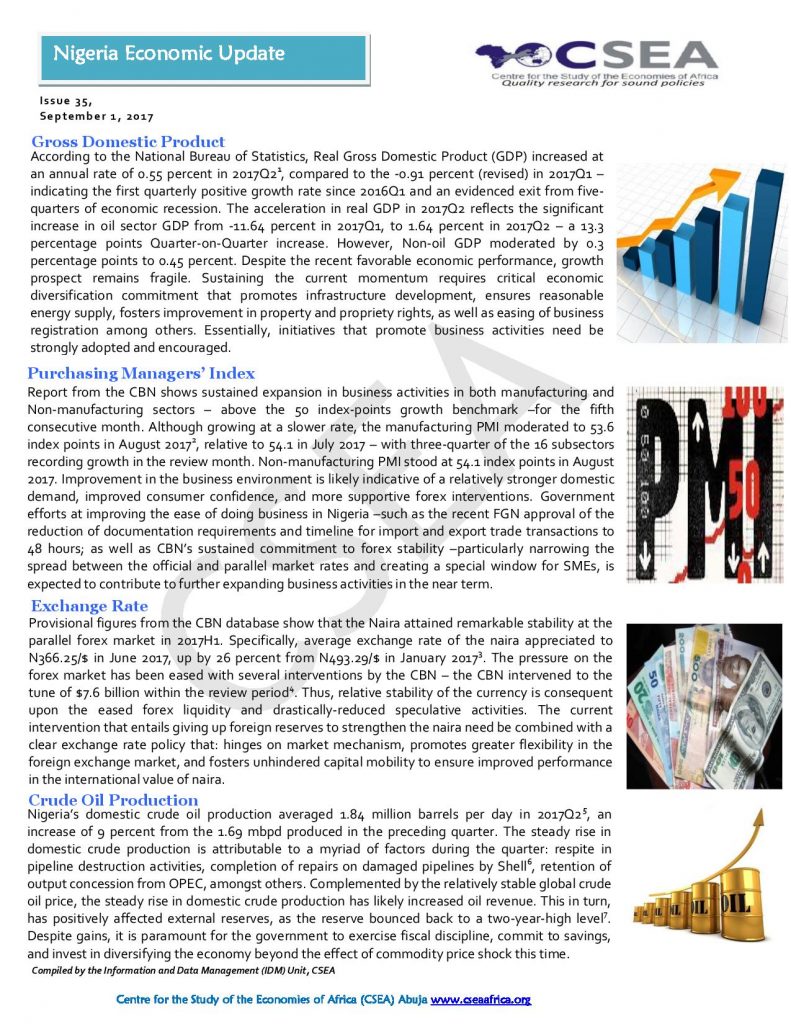Macroeconomic Report & Economic Updates

September 13, 2017
Nigeria Economic Update (Issue 35)
Nigeria’s Real Gross Domestic Product (GDP) increased at an annual rate of 0.55 percent in 2017Q21, compared to the -0.91 percent (revised) in 2017Q1 indicating the first quarterly positive growth rate since 2016Q1 and an evidenced exit from five quarters of economic recession. The acceleration in real GDP in 2017Q2 reflects the significant increase in oil sector GDP from -11.64 percent in 2017Q1, to 1.64 percent in 2017Q2 a 13.3 percentage points Quarter-on-Quarter increase. However, Non-oil GDP moderated by 0.3 percentage points to 0.45 percent. Despite the recent favorable economic performance, growth prospect remains fragile.
Related
Nigeria Economic Update (Issue 2)
Inflation rate rose slightly to 9.4 percent in
November 2015 from 9.3 percent in the previous month. This rise is attributed
to price increase in Food and Non-Alcoholic Beverages, and Transportation costs
which extends from shortages of petrol across the country. The food
sub-index grew by 0.2 percentage points to 10. 1 percent while, the Core sub-index
declined by 0.2 percentage points to 8.7 percent within the period. The
inflationary up-tick points to the need to curtail the rising food prices by
increasing the supply of petrol in the country.
Nigeria Economic Update (Issue 26)
Power sector statistics indicates a huge decline in power generated in the week under review (June 23, 2017 to June 30, 2017). Power generated, attained a peak of 4,305 MW on June 23, 2017 but fell significantly by 33.1 percent to approximately average of 3,000 MW as at June 30, 2017. The huge decline is attributable to continued poor payment and inability of most GENCOs to pay for gas supply and a system collapse. Consequently, power sector lost huge prospective funds; and daily power supply reduced to 4.5 hours per day7. Going forward, improvement in energy supply is critical to domestic production, job creation, and diversification agenda of the government.
